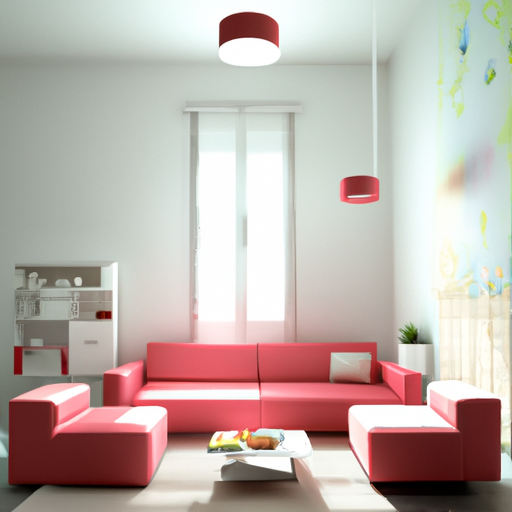
Looking to transform your small space with the perfect color scheme? In this article, we will explore some of the best color combinations that can help maximize the visual appeal and functionality of your compact living area. Whether you’re into modern and minimalist designs or prefer bold and vibrant tones, we’ve got you covered. Discover how the right color scheme can make your small space feel larger, brighter, and more stylish. So, say goodbye to dull and cramped rooms and get ready to unleash your inner interior designer!
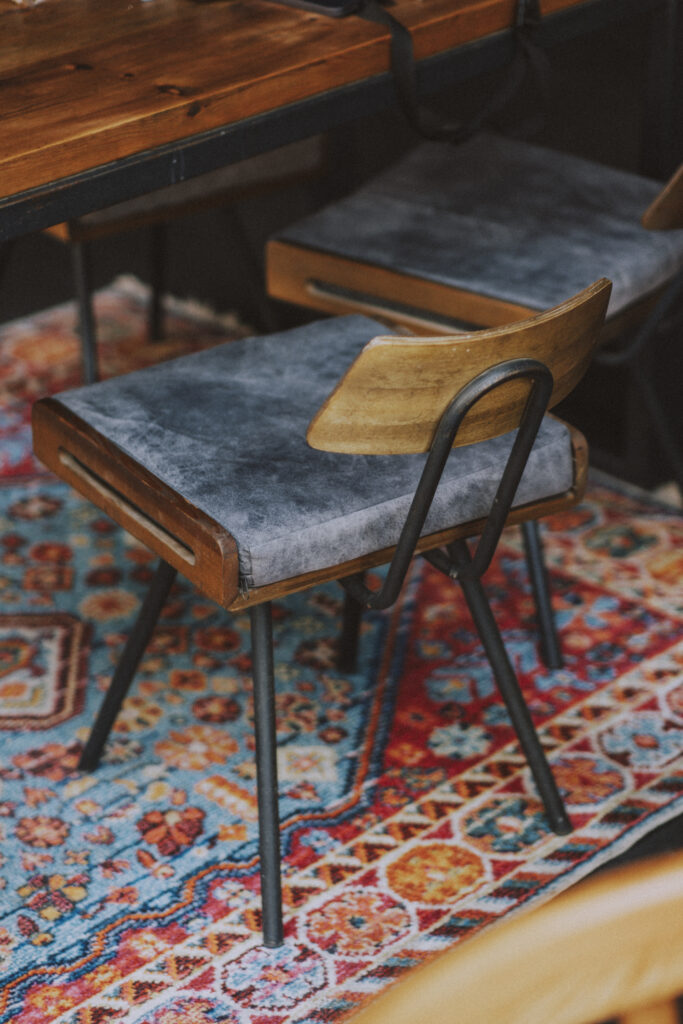
Light and Bright Color Schemes
White and Off-White
When it comes to creating a light and bright color scheme for small spaces, white and off-white shades are a perfect choice. These colors have a unique ability to reflect light, making any room appear larger and more spacious. By using white or off-white on walls, ceilings, and even furniture, you can create a clean and airy feel in your small space. These colors also provide a great backdrop for any other accents or decor pieces you may want to incorporate into the room.
Pastel Colors
Another option for a light and bright color scheme is to use pastel colors. Soft pinks, baby blues, and light yellows can create a gentle and calming atmosphere in your small space. These colors add a touch of color without overpowering the room, and they work particularly well in bedrooms, nurseries, or any space where you want to create a serene and soothing ambiance.
Neutral Shades
If you prefer a more subtle color scheme, neutral shades are a great choice for small spaces. Colors like beige, taupe, and cream can create a warm and inviting environment. These shades also provide a versatile and timeless backdrop for any decor style or theme you want to incorporate into your small space. Neutral colors work well in any room and can easily be paired with bold accents or accessories to add interest and personality to the space.
Bold and Vibrant Color Schemes
Deep Jewel Tones
For those who want to make a statement with their small space, a bold and vibrant color scheme may be the way to go. Deep jewel tones such as emerald green, sapphire blue, or amethyst purple can add a sense of richness and luxury to your room. These colors work particularly well when used on accent walls or as pops of color in furniture or accessories. By incorporating deep jewel tones into your small space, you can create a visually stunning and sophisticated look.
Bright Accent Wall
Another option for adding a bold and vibrant color scheme to your small space is to use a bright accent wall. By painting one wall in a bold and eye-catching color, you can instantly create a focal point in the room. This technique works especially well in small living rooms or bedrooms where there may not be a lot of wall space to work with. Pairing the bright accent wall with neutral or light-colored furniture and accessories will help balance the room and prevent it from feeling overwhelming.
Contrasting Colors
If you want to create a visually dynamic and energetic color scheme for your small space, consider using contrasting colors. Contrasting colors are colors that are opposite each other on the color wheel, such as blue and orange or yellow and purple. When used together, these colors create a strong visual impact and can make a small space feel vibrant and lively. However, to prevent the space from feeling chaotic, it’s important to use these colors strategically and balance them with neutral or lighter shades.
Monochromatic Color Schemes
Shades of a Single Hue
A monochromatic color scheme involves using varying shades and tones of a single hue throughout a room. This technique can create a sense of harmony and cohesion in a small space. For example, if you choose blue as your main hue, you can incorporate light blue, medium blue, and dark blue shades in different elements of the room. This creates a visually pleasing and cohesive look without overwhelming the space with too many different colors.
Gray-Scale Color Palette
A gray-scale color palette is a great option for those who want a sophisticated and elegant color scheme for their small space. By using varying shades of gray, you can create a timeless and versatile look that works well in any room. Gray also pairs well with other colors and can be used as a neutral backdrop for bold accent pieces or pops of color. By incorporating different textures and finishes in varying shades of gray, you can add depth and interest to your small space.
All-White Color Scheme
An all-white color scheme is a classic choice for small spaces. By using white on walls, floors, furniture, and accessories, you can create a clean, minimalist, and timeless look. An all-white color scheme not only makes a small space appear larger but also gives it a fresh and airy feel. To prevent an all-white space from feeling sterile, it’s important to incorporate different textures and finishes. This can be done through the use of white furniture with interesting textures, such as wicker or linen, or by adding pops of color through accessories and artwork.
Cool and Calming Color Schemes
Blues and Greens
When designing a small space, consider using cool and calming colors such as blues and greens. These colors are often associated with nature and can create a tranquil and serene atmosphere. Light shades of blue, like sky blue or aqua, can make a small space feel open and airy, while deeper shades of green, like emerald or sage, can bring a sense of grounding and relaxation. Cool colors work well in bedrooms, bathrooms, or any space where you want to create a peaceful and calming environment.
Soft and Subtle Cool Colors
In addition to blues and greens, there are other soft and subtle cool colors that can work wonders in small spaces. Colors like lavender, pale gray, or muted mint can create a soothing and serene ambiance without overpowering the room. These colors are perfect for small home offices or reading nooks, as they can help create a sense of focus and relaxation.
Minimalistic Earth Tones
If you’re looking for a color scheme that brings a sense of warmth and tranquility to your small space, consider using minimalistic earth tones. Colors like sandy beige, warm taupe, or soft terracotta can create a cozy and inviting atmosphere. These colors work well in living rooms, bedrooms, or any space where you want to create a sense of comfort and relaxation. Pairing earth tones with natural materials and textures, such as wood or rattan, can further enhance the cozy and inviting feel of the space.
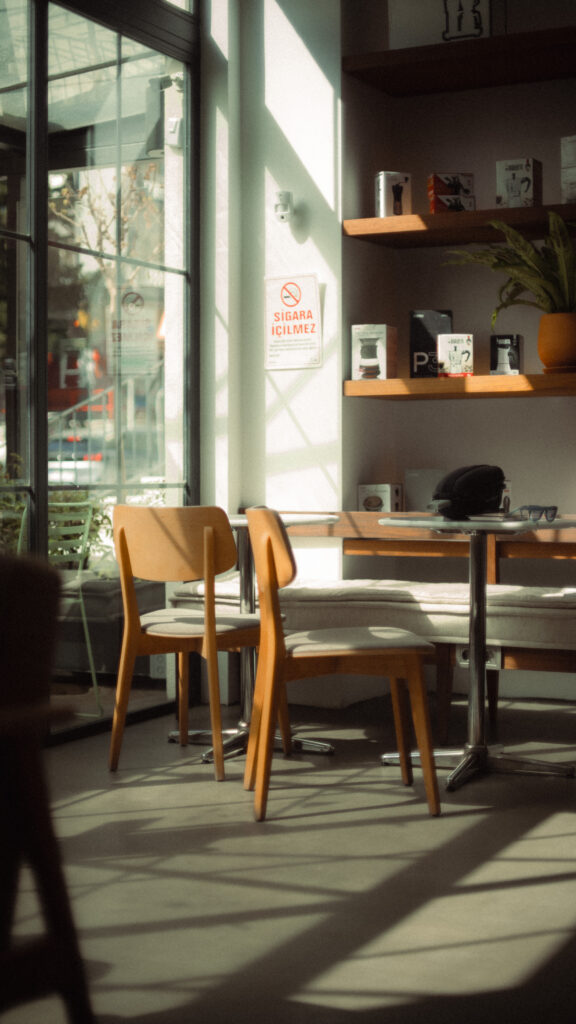
Warm and Cozy Color Schemes
Earthy Neutrals
To create a warm and cozy atmosphere in your small space, consider using earthy neutrals. Colors like warm beige, creamy tan, or rich caramel can create a sense of comfort and relaxation. These colors work well in living rooms, dining areas, or any space where you want to create a cozy and inviting environment. Pairing earthy neutrals with warm lighting and plush textures will further enhance the cozy feel of the space.
Rich Warm Tones
For a bold and luxurious color scheme, rich warm tones are an excellent choice for small spaces. Colors like deep burgundy, burnt orange, or golden yellow can add a sense of elegance and opulence to your room. These colors work particularly well when used in small doses, such as on an accent wall or in accessories like pillows or artwork. Pairing rich warm tones with neutral or light-colored furniture will ensure that the space doesn’t feel overwhelming.
Tropical-Inspired Hues
If you want your small space to have a lively and tropical feel, consider using vibrant and energetic colors inspired by nature. Colors like vibrant turquoise, sunny yellow, or lush green can create a sense of joy and vibrancy in your room. These colors work well in small kitchens, bathrooms, or any space where you want to create a playful and lively atmosphere. Pairing tropical-inspired hues with natural materials like bamboo or rattan can further enhance the tropical vibe of the space.
Accent Colors for Small Spaces
Pops of Vibrant Colors
To add excitement and visual interest to your small space, consider incorporating pops of vibrant colors as accent pieces. Whether it’s a bold red chair, a vibrant yellow throw pillow, or a colorful piece of artwork, adding bright and eye-catching colors can instantly liven up your room. By keeping the majority of the space neutral and using pops of color strategically, you can create a balanced and visually appealing look.
Metallic Finishes
Metallic finishes can also act as accent colors in small spaces. Gold, silver, or copper accents can add a touch of elegance and glamour to your room. Whether it’s a metallic lamp, a decorative mirror frame, or a shiny vase, incorporating metallic finishes can create a sense of luxury and sophistication.
Natural Wood Tones
If you prefer a more earthy and organic look, natural wood tones can serve as beautiful accent colors in small spaces. Whether it’s a wooden coffee table, a rustic bookshelf, or a set of wooden chairs, adding natural wood elements can bring warmth and texture to your room. Wood tones also pair well with a variety of color schemes, making them a versatile choice for any small space.
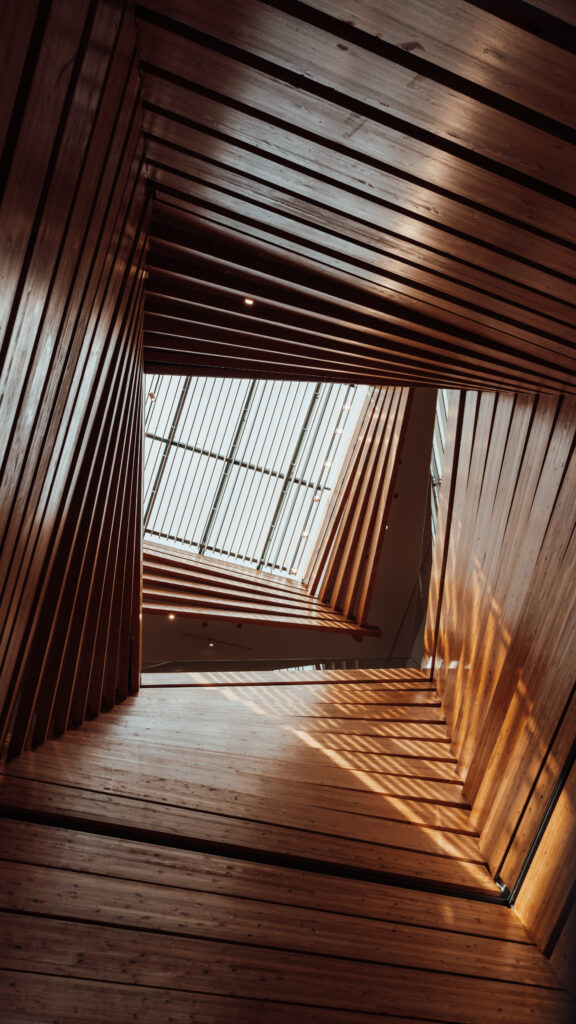
Contrasting Colors for Visual Interest
Complementary Color Pairings
If you want to create a visually striking and harmonious color scheme, consider using complementary color pairings. Complementary colors are colors that are opposite each other on the color wheel, such as blue and orange or purple and yellow. When used together, these colors create a strong contrast and can make a small space feel visually dynamic. Using complementary color pairings on accent walls, furniture, or accessories can add a bold and energetic look to your room.
Analogous Color Palette
An analogous color palette involves using colors that are adjacent to each other on the color wheel. For example, using shades of blue, green, and teal creates a harmonious and soothing color scheme. Analogous color palettes work well in small spaces as they create a sense of cohesion and flow. By using varying shades and tones of analogous colors throughout the room, you can create a visually pleasing and balanced look.
Triadic Color Scheme
A triadic color scheme involves using three colors that are evenly spaced around the color wheel, creating a balanced and harmonious look. For example, using shades of red, yellow, and blue can create a vibrant and energetic color scheme. Triadic color schemes work well in small spaces as they provide a visually interesting and dynamic look. By incorporating different shades and tones of triadic colors in your room, you can create a bold and visually stimulating environment.
Optical Illusions with Color
Use Lighter Colors
One way to create an optical illusion of space in a small room is to use lighter colors. Lighter colors reflect more light and can make a space feel larger and more open. By painting walls and ceilings in light shades of white, cream, or pastels, you can create a sense of airiness and expansiveness. Pairing light-colored walls with light-colored furniture and accessories will further enhance the illusion of space.
Play with Vertical Color Block
Another optical illusion technique is to play with vertical color blocking. By painting one wall in a darker color and the adjacent walls in a lighter shade, you can create the illusion of height in a small space. Vertical color blocking draws the eye upward and gives the impression of taller walls. This technique works well in small bedrooms or living rooms where you want to create a sense of verticality and space.
Utilize Optical Illusions
There are various optical illusions that can be created with color to make a small space appear larger. One popular technique is to use stripes on the walls or flooring. Vertical stripes can make a room appear taller, while horizontal stripes can make a room appear wider. Another technique is to incorporate mirrors into the decor. Mirrors reflect light and create the illusion of depth, making a space feel more open and spacious. By strategically placing mirrors on walls or using mirrored furniture or accessories, you can create the illusion of a larger room.
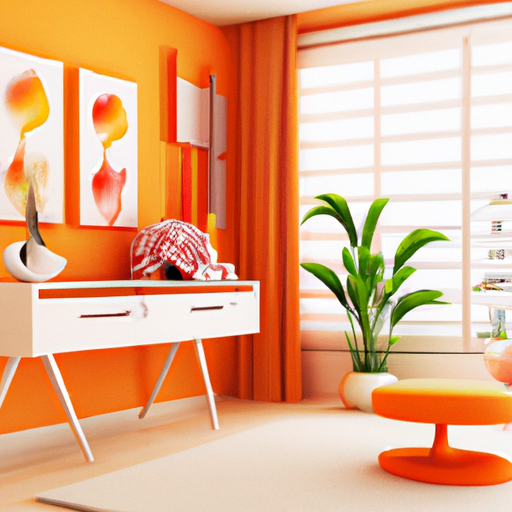
Considerations for Small Spaces
Harmonizing with the Existing Decor
When choosing a color scheme for a small space, it’s important to consider the existing decor and furnishings. Take into account the colors and materials already present in the room and choose a color scheme that complements and harmonizes with them. By doing so, you can create a cohesive and visually pleasing space where all elements work together seamlessly.
Reflecting Natural Light
Another important consideration for small spaces is to maximize natural light. Natural light can make a room feel larger and more open. To enhance the effect of natural light, choose light and reflective colors for your walls and furniture. Light-colored walls and furniture will bounce off light and create a bright and airy feel in the room. Additionally, consider using sheer curtains or blinds that allow natural light to flood the space while maintaining privacy.
Creating the Illusion of Space
In addition to choosing the right color scheme, there are other design techniques that can help create the illusion of space in a small room. Using furniture with legs instead of heavy, floor-hugging pieces can create a sense of openness and make the room feel more spacious. Additionally, keeping the space free of clutter and maintaining a clean and organized environment can make a small room feel larger and more inviting. By combining these design techniques with a well-chosen color scheme, you can maximize the potential of your small space.
Testing and Choosing the Right Color Scheme
Sampling Colors
Before committing to a specific color scheme, it’s important to sample the colors in the space. Paint samples on the walls and observe how they look in natural and artificial light throughout the day. Colors can appear different in different lighting conditions, so it’s crucial to choose a color that looks pleasing in all lighting situations. Additionally, consider how the colors interact with the existing decor and furnishings. By sampling colors and observing them in the space, you can ensure that you choose the right color scheme for your small space.
Considering the Mood
The mood and atmosphere you want to create in your small space should also influence your choice of color scheme. Different colors evoke different emotions and have different psychological effects. For example, blues and greens are known for their calming and soothing qualities, while reds and oranges can create a sense of energy and excitement. Consider the purpose of the space and the mood you want to evoke when choosing the color scheme. By aligning the color scheme with the desired mood, you can create a space that feels harmonious and inviting.
Getting Professional Advice
If you’re unsure about which color scheme to choose for your small space, it’s always a good idea to seek professional advice. Interior designers or color consultants can offer expert guidance and help you create a cohesive and visually appealing space. They can also provide valuable insights and suggestions based on their experience and knowledge of color theory. Hiring a professional may be an investment, but it can save you time and ensure that you end up with a color scheme that you love and that works well in your small space.
In conclusion, the best color schemes for small spaces are those that create a sense of openness, harmony, and visual interest. Whether you opt for light and bright colors, bold and vibrant hues, monochromatic palettes, cool and calming shades, warm and cozy tones, accent colors, contrasting combinations, optical illusions, or any other design approach, it’s important to consider the specific needs and characteristics of your small space. By choosing a color scheme that complements the existing decor, maximizes natural light, and creates the illusion of space, you can transform your small space into a visually stunning and functional environment.
